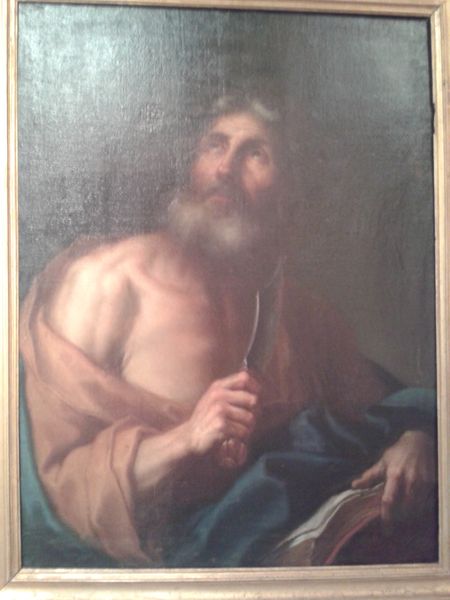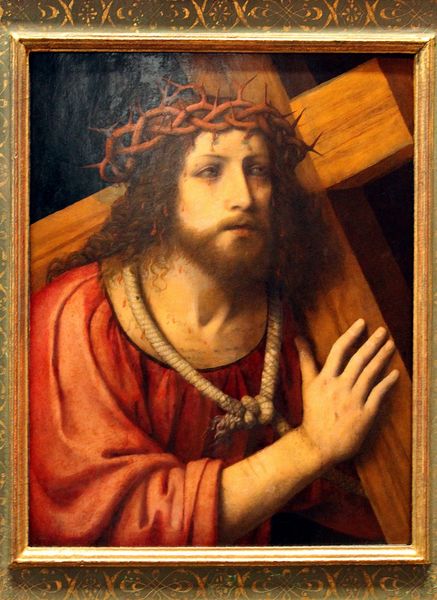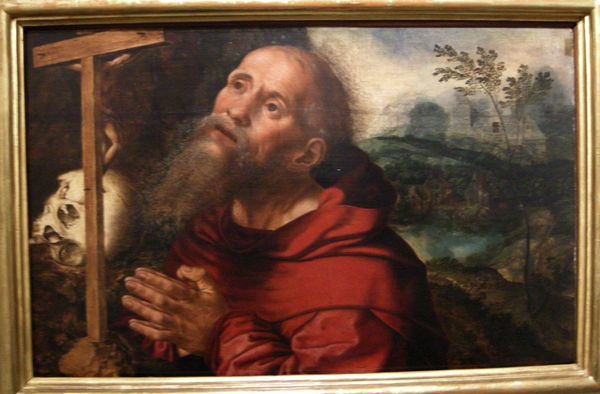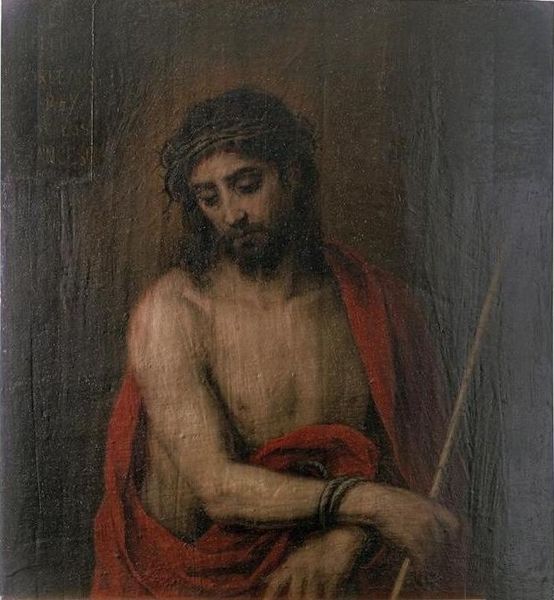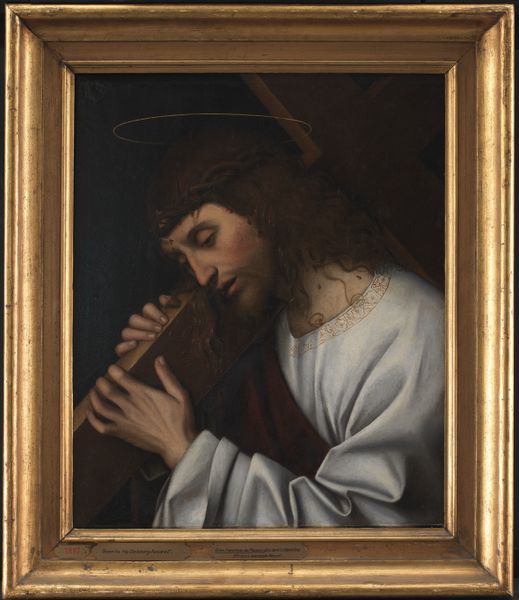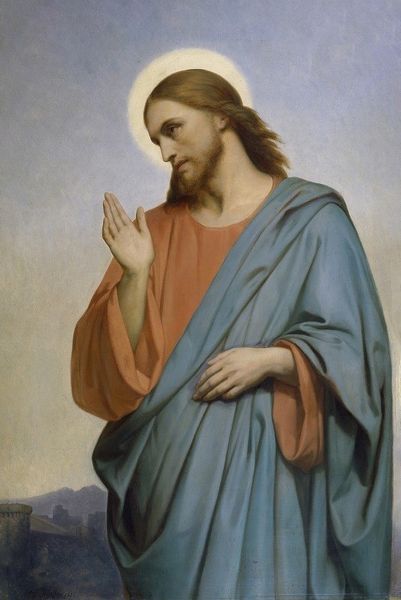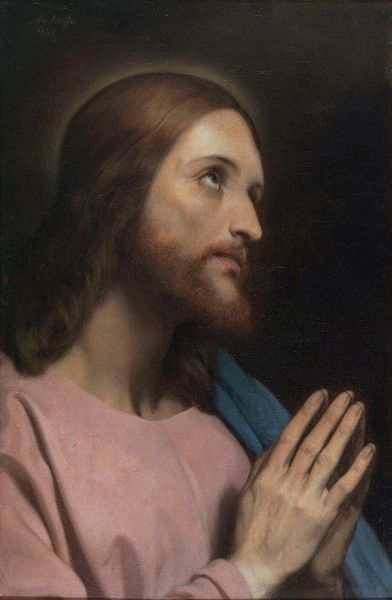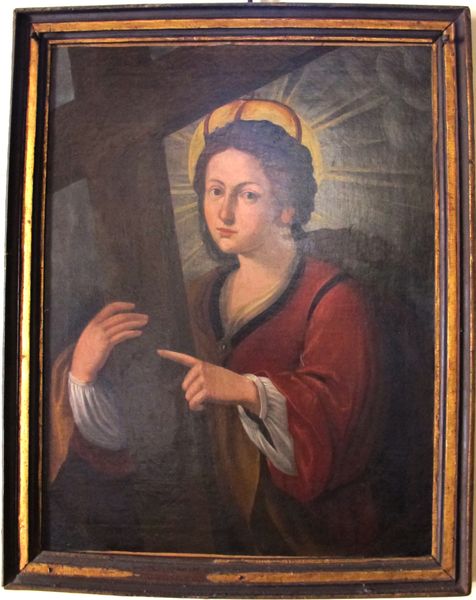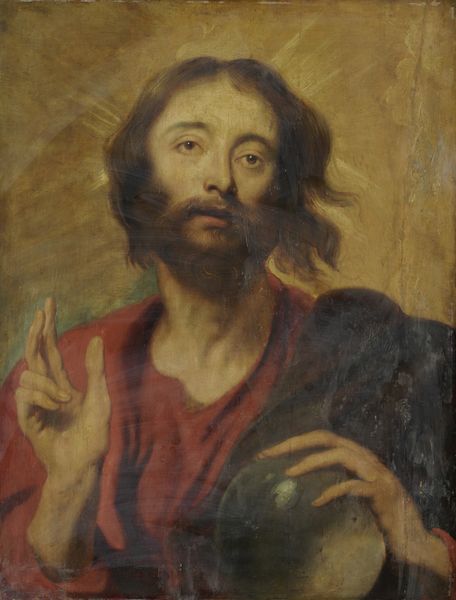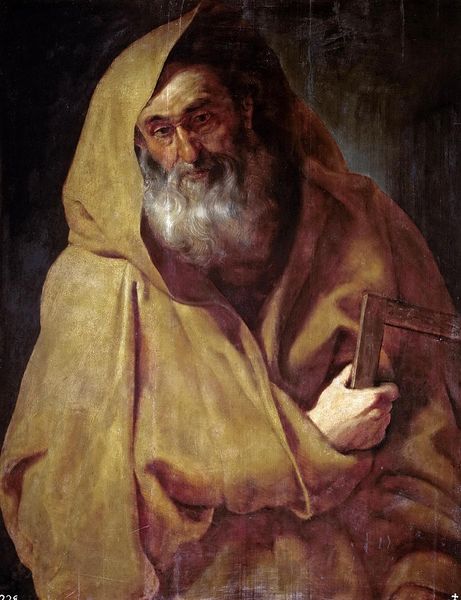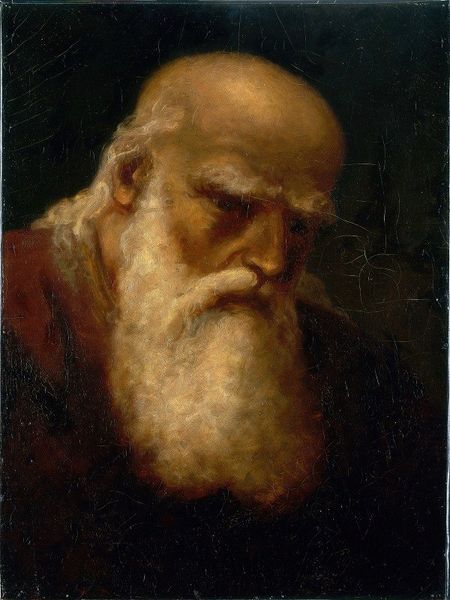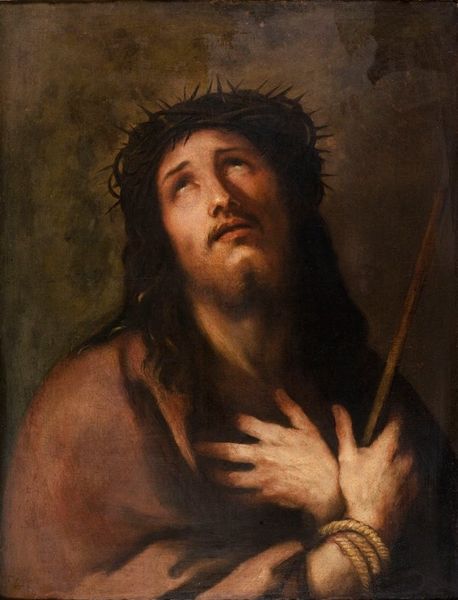
painting, oil-paint
#
portrait
#
baroque
#
painting
#
oil-paint
#
oil painting
#
history-painting
#
academic-art
#
portrait art
Copyright: Public domain
Curator: What do you see? Editor: Here we have Placido Costanzi’s oil painting, “San Francesco Di Paola”. The soft lighting gives the work an introspective and peaceful feel. It's very much in the style of a Baroque portrait. What strikes me, though, is how tactile it feels, you can almost touch the rough wooden cross and the coarse fabric of the monk’s habit. What do you make of it? Curator: What stands out to me is precisely what you mentioned: materiality. Forget the piety for a moment; consider the production. The oil paint itself – how was it sourced, ground, mixed? This wasn’t a mass-produced tube, remember. The canvas, stretched and primed, the brushes meticulously cleaned and cared for. Editor: Right, it's easy to forget the sheer labor involved! Curator: Exactly! Think about the pigments themselves. Where did the artist get them? Were they rare, imported, costly? These details speak to economic systems, to global trade, to hierarchies of value far beyond the immediate religious subject matter. Even the sitter's garments and their social context contribute to the interpretation of this work, no? Editor: That's true; even the brown of his habit speaks to the traditions, the cultural associations and materials employed and used throughout time. This isn’t just devotion; it is production, and production means economics! I had been initially stuck on the surface-level appearance of the piece but hadn't gone further than that. Thank you. Curator: The intersection between material reality and symbolic meaning enriches the interpretation of an artwork. Thank you for opening this dialogue.
Comments
No comments
Be the first to comment and join the conversation on the ultimate creative platform.
